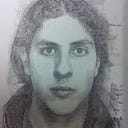Enhancing Precision and Responsiveness: Aim Features within Cinemachine’s Composer in Virtual Cameras — Unity 3D
Precise camera control is crucial for creating immersive and engaging experiences. Cinemachine, with its powerful virtual camera system, offers the Composer feature, which provides a range of aim-related functionalities. In this article, we will dive deeper into the aim features, exploring lookahead time, tracked object offset, lookahead ignore, lookahead smooth, horizontal and vertical damping, as well as the dead zone. Understanding these features will enable developers to create precise and responsive camera movements in their games.
Cinemachine Composer is a core component of the Cinemachine system that provides automatic camera framing and composition based on a tracked object’s movement. By utilizing the aim features within Composer, developers can achieve smooth and dynamic camera control during gameplay. These are some of the adjustable properties:
Lookahead Time: Lookahead time determines how far ahead the Composer predicts the target’s movement. By adjusting this parameter, developers can control the anticipation of camera movement, ensuring that the camera stays focused on the target while smoothly following its path.
Tracked Object Offset: The tracked object offset feature allows developers to adjust the camera’s position relative to the tracked object. By applying an offset, they can ensure that the target remains in the desired area of the frame, enhancing the composition and visual aesthetics of the scene.
Lookahead Ignore: In certain situations, it may be necessary to temporarily ignore the lookahead feature to prevent undesired camera movements. The lookahead ignore feature enables developers to define specific events or conditions during which the Composer should temporarily halt its predictive movements, providing more control over camera behavior.
Lookahead Smooth: Lookahead smooth controls the smoothness of the camera’s movement as it follows the tracked object. By adjusting this parameter, developers can achieve fluid camera motion that seamlessly tracks the target’s movement, avoiding jerky or abrupt changes in camera positioning.
Horizontal and Vertical Damping: Horizontal and vertical damping parameters allow developers to adjust the camera’s responsiveness to the target’s movement in the respective axes. These features determine the smoothness and speed of camera realignment, ensuring that camera movement feels natural and responsive to player actions. The more dampening, the smoother the delay will be in the camera turning towards the look-at object.
Dead Zone: The dead zone feature allows developers to define an area in the frame where the camera remains still, regardless of the target’s movement. This can be useful for preventing unnecessary camera adjustments when the target is within a specified range, reducing distractions and enhancing player focus.
The aim features within Cinemachine Composer provide developers with powerful tools to create precise and responsive camera movements in their games. By leveraging functionalities such as lookahead time, tracked object offset, lookahead ignore, lookahead smooth, horizontal and vertical damping, and the dead zone, developers can fine-tune camera behavior to enhance precision, responsiveness, and overall visual composition.
Experimenting with these features, iterating on camera settings, and considering the specific requirements of the game and gameplay mechanics will enable developers to achieve precise and satisfying camera control. Mastering the aim features within Cinemachine Composer empowers developers to create captivating and immersive experiences, elevating the quality and enjoyment of their games.
